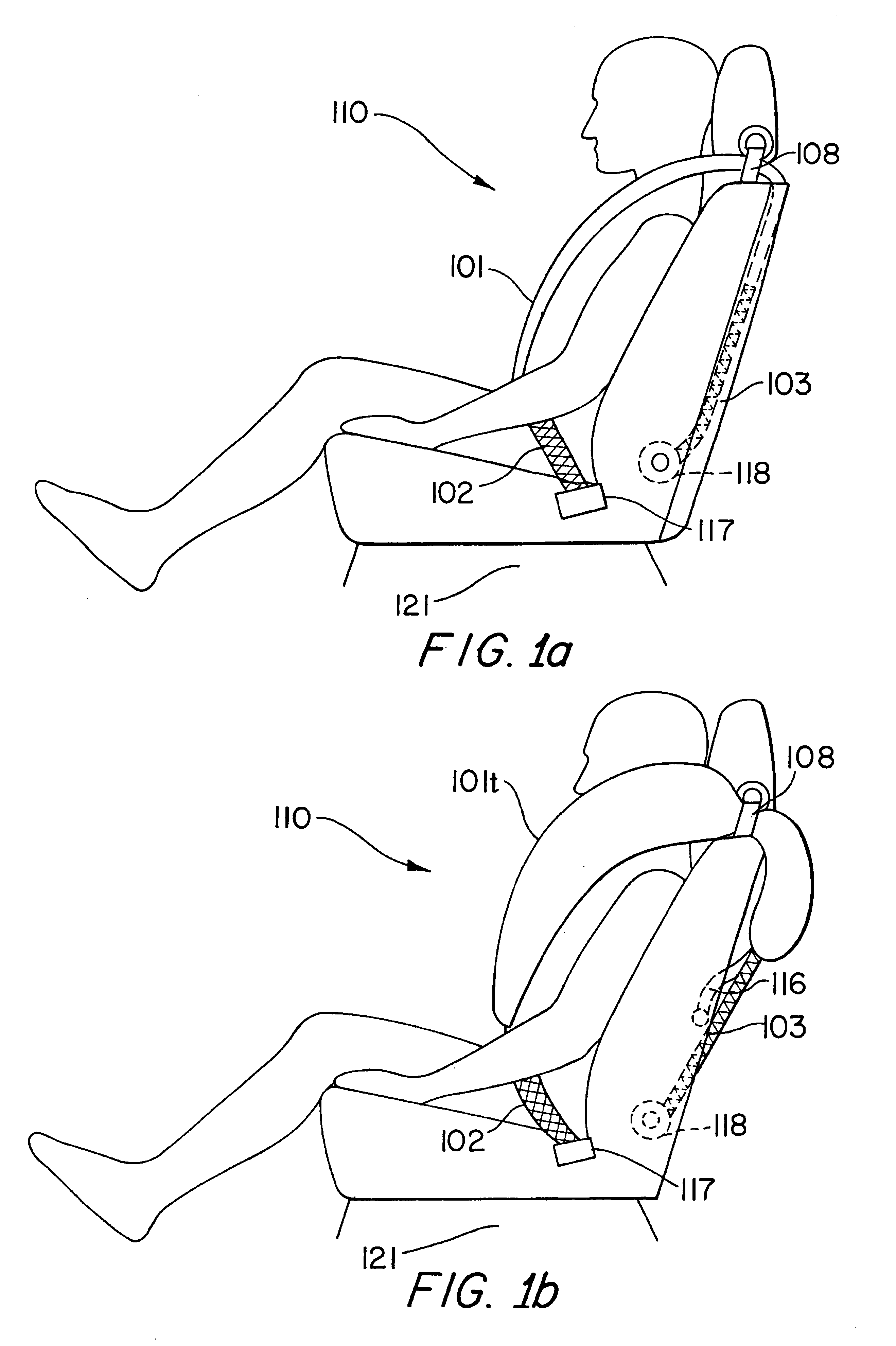Inflatable tubular torso restraint system with pivoting upper anchor point attachment
a tubular torso and anchor point technology, applied in the field of systems, can solve the problems of unnecessarily serious primary injuries, inadequate protection provided by conventional seat belts, and the inability to provide occupant head protection on the struck side of the vehicl
- Summary
- Abstract
- Description
- Claims
- Application Information
AI Technical Summary
Benefits of technology
Problems solved by technology
Method used
Image
Examples
Embodiment Construction
A preferred embodiment of the invention is shown in the uninflated and inflated configurations in FIGS. 1a through 1e installed with respect to a typical driver-side automobile seat 121. A mirror image of the invention would function equally as well on a passenger-side automobile seat.
As shown in the FIGS. 1a-1e, the seat belt system 110 of the first preferred embodiment comprises lap belt 102, shoulder or torso belt 103, including an inflatable section 101 comprising a torso portion 101t, buckle assembly 105, anchor 106, anchored inertial reels 117 and 118, gas generator 122, and sensor assembly (not shown). As shown in FIG. 1c, lap belt 102 and torso belt 103 form one continuous strap which is attached to or passes through the male portion of buckle assembly 105. Lap belt 102 is designed to restrict the forward motion of a seated occupant at the pelvis. The lap belt 102 is connected to anchored inertial reel 117 so that the length of the lap belt 102 can be adjusted to accommodate...
PUM
 Login to View More
Login to View More Abstract
Description
Claims
Application Information
 Login to View More
Login to View More - R&D
- Intellectual Property
- Life Sciences
- Materials
- Tech Scout
- Unparalleled Data Quality
- Higher Quality Content
- 60% Fewer Hallucinations
Browse by: Latest US Patents, China's latest patents, Technical Efficacy Thesaurus, Application Domain, Technology Topic, Popular Technical Reports.
© 2025 PatSnap. All rights reserved.Legal|Privacy policy|Modern Slavery Act Transparency Statement|Sitemap|About US| Contact US: help@patsnap.com



